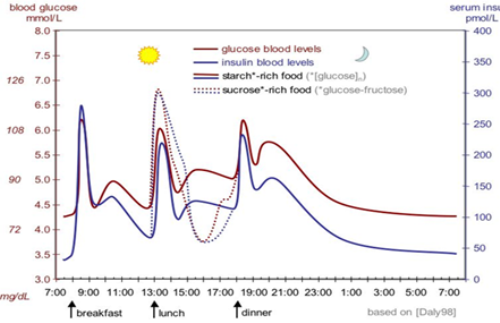
Review of current insulin and proposal of an advanced nanotechnology inhaled protaphane-polystyrene as alternative
Abstract
Objective: Find out the characteristic of an inhaled insulin as a substitute to injectable insulin.
          Methods: Gather the pitfall of current inhaled insulin and suggest solution based on current nano-technology and commonly used insulin.
          Findings: Currently available inhaled insulin is expensive and can cause hypoglycemia, bronchospasm, and other adverse effects in subjects with pre-existing respiratory diseases as shown in lung function tests. The particle diameter is 1-5 microns. Bioavailability is fair and the inhaled insulin dose is  3-10 times higher than injectable insulin one since only 10% is absorbed through the alveoli to enter the bloodstream. Insulin induces cell division wherever it is deposited which may lead to aberrant cell growth.
Â
Current subcutaneous insulin therapy regime is based on the normal human physiology. Either metformin plus 2 doses of intermediate-acting insulin daily or 3 doses of short-acting insulin plus one dose of long-acting insulin daily. Nanoparticle passes directly through epithelium to enter the bloodstream. There is less respiratory tract irritation and the bioavailability is good.
Nanoparticle corona (<100 nm) allows hypothetical inhaled protaphane to pass through the lung fluids and its action can be slowed down by polystyrene polymerization. Â Nanoporous membranes or adding specific nanoreceptors to drug surfaces are other alternatives.
Conclusion: Pure inhaled insulin lowers blood glucose quickly and, being a growth factor, potentially increases aberrant cell growth. Neutral protamine Hagedorn (NPH) insulin is a stable and intermediate-acting insulin. Nanotechnology allows the protaphane nanoparticle to pass through respiratory epithelium and to enter the blood vessels with minimal interaction with pneumocytes.Â
Full Text:
PDFReferences
Andrade F et al. Nanocarriers for pulmonary administration of peptides and therapeutic proteins. Nanomedicine. 2011; 6(1):123–141.
Sélam J-L. Inhaled Insulin: Promises and Concerns. Journal of Diabetes Science and Technology.
; 2(2):311-315.
No author list. An inhaled insulin (Arezza). JAMA. 2015 Jun 2; 313(21):2176-2177.
Peng et al. Kinetics of II-VI and III-V Colloidal Semiconductor Nanocrystal Growth: “Focusing†of Size Distributions. Journal of the American Chemistry Society. 1998; 120 (21): 5343–5344.
Marco P. Monopoli, et al. Biomolecular coronas provide the biological identity of nanosized materials. Nature Nanotechnology. 2012; 7,779 -786.
Vyas and Khar, et al. Targeted and Controlled Drug Delivery Novel Carrier Systems. CBS Publishers & Distributors; 1st edition; January 1, 2006.
Andrade F, et al. Biological assessment of self-assembled polymeric micelles for pulmonary administration of insulin. Nanomedicine. 2015. 11(7): 1621–1631.
Carthy JMc., Gong X, and Radomski MW. Polystyrene nanoparticles activate ion transport in human airway epithelial cells. Int J Nanomedicine. 2011; 6: 1343–1356.
Zhao Li, Liping Sun, Zaijun Lu, Xuantao Su, Qifeng Yang, Xun Qu and Li Li. Enhanced effect of photodynamic therapy in ovarian cancer using a nanoparticle drug delivery system. International Journal of Oncology, July 10, 2015. Pages: 1070-1076. doi: 10.3892/ijo.2015.3079.
Bildad KN, Ian WK, Kevin MG Taylor. Insulin nanoparticles: Stability and aerosolization from pressurized metered dose inhalers. International Journal of Pharmaceutics. June 2009; 375 (1–2):114–122.
Maksimenko OO, Pavlov EP, Tushov ÉG, Molin AA., Stukalov Yu. V., Prudskova TN, et al. ylcyanoacrylate) nanoparticles. Pharmaceutical Chemistry Journal. June 2008; 42(6):363-367.
Jian Zhang, Libo Wu, Libo Wu, Hak-Kim Chan, Wiwik Watanabe. Formation, characterization, and fate of inhaled drug nanoparticles. Advanced Drug Delivery Reviews 2011; 63 (6): 441–455.
Jani PU, Nomura T, Yamashita F, Takakura Y, Florence AT, Hashida M. Biliary excretion of polystyrene microspheres with covalently linked FITC fluorescence after oral and parenteral administration to male wistar rats. Journal of Drug Targeting. 1996; 4 (2): 87-93.
Baoquan Zhao, Lan S, Wuxu Zh, Yuxia Wang, Junjing Zhu, Xiaoyu Zhu et al. Secretion of intestinal goblet cells: A novel excretion pathway of nanoparticles. Nanomedicine: Nanotechnology, Biology and Medicine. May 2014; 10 (4): 839–849.
J. Nriagu, et al. Zinc toxicity in human. Encyclopedia of Environmental health. 2011, 801-807.
Horrow JC, et al. Protamine: a review of its toxicity. Anaesth Analg. 1985 Mar; 64(3):
-361.
Archana S. Patole, Shashikant P. Patoleb, Hyuck Kanga, Ji-Beom Yoob, Tae-Ho Kima, Jeong-Ho Ahna,. A facile approach to the fabrication of graphene/ polystyrene nanocomposite by in situ microemulsion polymerization. Journal of Colloid and Interface Science. 2010; 350 (2):530–537.
Barshtein G, Livshits L, Shvartsman LD, Shlomai NO, Yedgar S, Dan Arbell. Polystyrene Nanoparticles Activate Erythrocyte Aggregation and Adhesion to Endothelial Cells. Cell Biochemistry and Biophysics. July 2015; pp1-9. doi: 10.1007/s12013-015-0705-6. .
Ekkapongpisit M, Giovia A, Follo C, Caputo G, Isidoro C. Biocompatibility, endocytosis, and intracellular trafficking of mesoporous silica and polystyrene nanoparticles in ovarian cancer cells: effects of size and surface charge groups. Int J Nanomedicine. 2012; 7: 4147–4158. doi:10.2147/IJN.S33803.
Toxicity of amino functionalized polystyrene nanoparticles www.youtube.com/watch?v=IGAqIXnsttg)
Loos C, Syrovet T, Musyanovych A, Mailänder V, Landfester K, Simme T. Functionalized polystyrene nanoparticles as a platform for studying bio–nano interactions. Beilstein J. Nanotechnol. 2014, 5:2403-2412. doi:10.3762/bjnano.5.250.
Manish Kumar Manish, Pardeep Khanna, Jugal Kishore. Understanding survival analysis: Kaplan-Meier estimate. Int J Ayurveda Res.2010 Oct-Dec; 1(4): 274–278.
Refbacks
- There are currently no refbacks.
